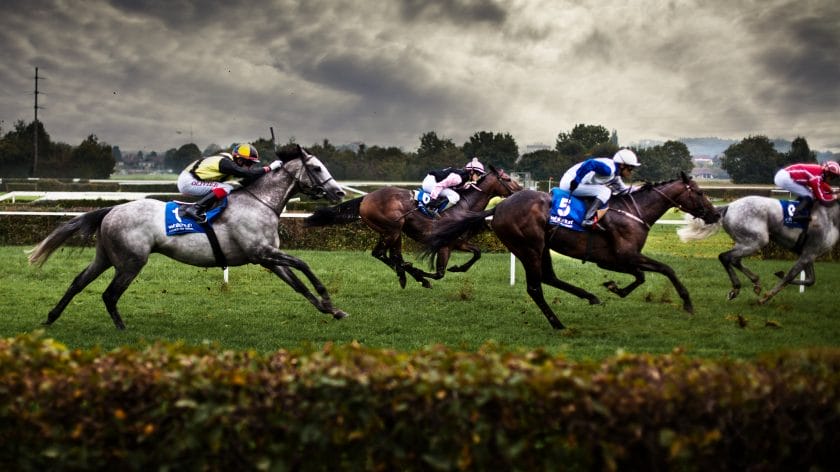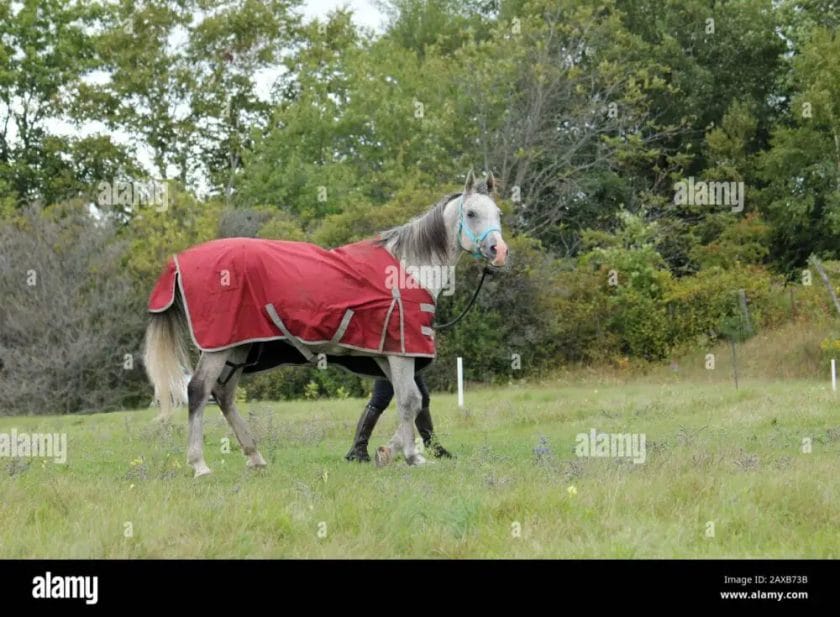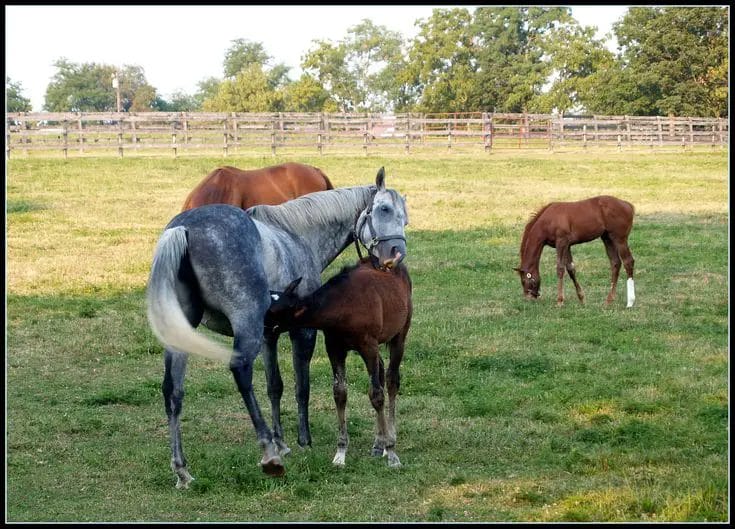Racehorses, revered for their speed and agility, should ideally retire to a peaceful life after their racing career. However, the unfortunate reality is that some racehorses do end up in the food industry, particularly in countries where horsemeat is consumed. The journey from the racetrack to the dinner table can be complex and often involves multiple stages of ownership and transactions. While efforts are being made to improve aftercare and promote ethical treatment of retired racehorses, the issue of racehorses ending up as food highlights the need for greater awareness and support for their post-racing lives.

Unveiling the Controversy: The Fate of Retired Racehorses
Retired racehorses, immense in their speed and power, captivate audiences around the world. These majestic creatures showcase their incredible athleticism, leaving onlookers breathless. But what becomes of these equine athletes when their racing careers come to an end?
The fate of retired racehorses has stirred up controversy within the horse racing community and among animal rights activists. While some horses are fortunate enough to find loving homes and second careers, many face an uncertain future plagued by neglect, abuse, or even slaughter.
The Transition Period
When racehorses retire, they enter a critical transition period. Their bodies, having endured intense training and racing, require rest and rehabilitation. During this time, it is crucial for these horses to be properly cared for to ensure a smooth transition into post-racing life.
Responsible horse owners and trainers understand the importance of providing retired racehorses with adequate time to recover physically and mentally. Veterinary care, proper nutrition, and access to pasture are essential elements of this transition period.
Second Career Opportunities
Thankfully, many retired racehorses find second careers in various equestrian disciplines. These versatile animals can excel in show jumping, dressage, eventing, or even recreational riding. With the right training and care, they can thrive in these new endeavors, showcasing their adaptability and intelligence.
Organizations dedicated to the retraining and rehoming of retired racehorses play a vital role in facilitating their transition into new careers. These organizations often collaborate with trainers, riders, and potential adopters to ensure a suitable match between horse and rider.
The Dark Side: Neglect and Abuse
Unfortunately, not all retired racehorses find themselves in loving homes or second careers. The dark side of the racing industry reveals stories of neglect, abuse, and abandonment. Some horses are discarded once their racing days are over, left to suffer in overcrowded and unsanitary conditions.
There have been instances where retired racehorses end up at auctions where they may be purchased by kill buyers. These buyers send horses to slaughterhouses for meat production. This heartbreaking reality highlights the need for stricter regulations and oversight within the industry to ensure the humane treatment of retired racehorses.
Advocacy and Solutions
Animal welfare organizations, as well as passionate individuals within the horse racing community, are actively working to address the challenges faced by retired racehorses. These efforts focus on increasing awareness, promoting responsible ownership and breeding practices, and advocating for legislation to protect these magnificent animals.
One solution gaining traction is the establishment of retirement and retraining programs by racetracks and industry stakeholders. These programs aim to support horses in their transition from racing to retirement, ensuring they receive proper care and are given opportunities for second careers.
In Summary
The fate of retired racehorses remains a controversial topic, stirring emotions and sparking debates. While some find happy endings, others face neglect and even slaughter. It is imperative that the racing industry, along with the support of animal welfare organizations and individuals, take responsibility for the well-being of these incredible animals. By providing proper care, retraining opportunities, and advocating for stricter regulations, we can ensure a brighter future for retired racehorses, honoring their remarkable contributions to the racing world.

Behind Closed Doors: The Journey of Racehorses towards the Dinner Table
When we think of racehorses, the image that comes to mind is one of grace, power, and speed. These majestic animals are revered for their athletic abilities and the excitement they bring to the world of horse racing. However, what many people don’t realize is that not all racehorses get to retire to a life of luxury and leisure. In fact, a significant number of these horses end up on a much different and often grim journey towards the dinner table.
The Dark Side of the Racing Industry
While the racing industry glamorizes the triumphs and victories of prominent racehorses, it rarely sheds light on their fate once their careers come to an end. Behind closed doors, a different story unfolds. Racehorses that are no longer profitable or deemed fit for racing are often discarded and sent to slaughterhouses.
This dark side of the racing industry is rooted in the economic realities of the sport. Horse racing is a high-stakes industry, with millions of dollars invested in the breeding, training, and upkeep of these animals. When a horse is no longer able to generate profit or win races, it becomes a financial burden for its owners. Instead of providing the retired racehorses with a dignified retirement, many owners choose to sell them for slaughter.
The Journey to the Slaughterhouse
Once a racehorse is deemed unfit for racing, it enters a journey that is far from glamorous. These horses are often transported long distances in cramped trailers, subjected to harsh conditions and stress. Many of them suffer injuries and illnesses during the journey, exacerbating their already dismal situation.
Upon arrival at the slaughterhouse, the horses are subjected to inhumane treatment. They are crowded into pens and held in cramped conditions, awaiting their turn to be slaughtered. The process itself is brutal and devoid of any compassion, as the horses are often killed in ways that cause tremendous suffering.
Alternatives and Solutions
The fate of racehorses doesn’t have to be so grim. There are alternatives and solutions that can ensure these magnificent animals are given a dignified retirement and a second chance at life. One such solution is the adoption and retraining of retired racehorses.
Several organizations and individuals are dedicated to rescuing and rehabilitating retired racehorses, giving them a new purpose and a loving home. Through proper training and rehabilitation, these horses can go on to excel in various disciplines, such as show jumping, dressage, or simply as companion animals.
Increased awareness and support for these organizations are crucial in changing the fate of retired racehorses. By promoting adoption, rehabilitation, and responsible horse ownership, we can create a brighter future for these once-glorious athletes.
In Summary
While racehorses may captivate us with their speed and beauty on the racetrack, their journey towards the dinner table is a dark and often forgotten reality. The racing industry must take responsibility for the fate of these animals and prioritize their welfare beyond their racing careers. Through adoption, rehabilitation, and increased support for organizations dedicated to the well-being of retired racehorses, we can ensure a better future for these incredible creatures.

From Winning Trophies to Dinner Plates: Exploring the Horse Meat Trade
Over the years, the horse meat trade has gained significant attention and controversy. What was once an industry associated with equestrian sports and noble steeds has now become a topic of discussion around dinner tables. In this section, we will delve into the horse meat trade, exploring its history, controversies, and impact on various sectors.
1. The History of the Horse Meat Trade
The consumption of horse meat dates back centuries, with evidence of its consumption found in ancient civilizations such as the Greeks and Romans. In many cultures, horse meat was a common source of protein, and it played a significant role in their diets.
However, in recent times, the horse meat trade has faced numerous challenges and controversies. The shift from viewing horses solely as sports companions to a potential food source has sparked debates and raised ethical concerns.
2. Controversies Surrounding the Horse Meat Trade
One of the main controversies surrounding the horse meat trade is mislabeling and the presence of horse meat in products without proper disclosure. This issue came to light in 2013, when traces of horse DNA were found in various meat products across Europe, leading to widespread outrage and calls for stricter regulations.
Another concern is the welfare of horses involved in the meat trade. With the demand for horse meat, there is a risk of unscrupulous practices, such as illegal slaughtering and transportation of horses. Animal rights activists argue that these practices are inhumane and should be addressed to ensure the well-being of these animals.
3. The Impact on Various Sectors
The horse meat trade has significant implications for various sectors, including the agricultural industry, food safety regulations, and consumer trust.
From an agricultural standpoint, the trade provides an additional market for horses that are no longer fit for equestrian activities or racing. It offers an opportunity for responsible horse owners to find a suitable end-of-life solution for their animals.
However, the presence of horse meat in food products has highlighted the need for stricter food safety regulations and traceability. Consumers have become more conscious of the origin and quality of the meat they consume, fueling the demand for transparency and accurate labeling.
In summary, the horse meat trade is a complex and controversial topic that raises questions about ethics, transparency, and animal welfare. By exploring its history, controversies, and impact on various sectors, we can gain a better understanding of this industry and the challenges it faces. As consumers, it is essential to be informed and make conscious choices about the food we consume.
Facing the Unthinkable: Examining the Reality of Racehorses Ending up as Food
When we think of racehorses, we envision majestic creatures, bred and trained for the thrill of competition. They are often seen as symbols of power, grace, and elegance. However, there is a darker side to the world of horse racing that many people are unaware of – the fate that awaits retired racehorses.
While some retired racehorses are fortunate enough to find loving homes and second careers as pleasure horses or in other equestrian disciplines, unfortunately, not all horses are so lucky. Despite their dazzling careers on the track, many racehorses end up facing a shocking and heartbreaking fate – being slaughtered for human consumption.
This reality may come as a surprise to those who have never delved into the depths of the horse racing industry. However, the truth is that when a racehorse’s career comes to an end, their value as an athlete diminishes significantly. The high cost of upkeep and care required for these magnificent animals becomes a burden for their owners, trainers, and breeders.
With limited options for retirement and rehoming, some racehorses inevitably end up on a path that leads them to slaughterhouses, where they are processed and prepared as meat for human consumption. It is a fate that is both shocking and unthinkable, considering the admiration and prestige these animals once garnered on the racetrack.
The issue of racehorses ending up as food exposes the dark underbelly of an industry that often prioritizes profit over the welfare of its equine participants. While efforts have been made to promote responsible retirement and rehoming programs, the sad reality is that not every retired racehorse receives the attention and care they deserve.
It is important to address this issue and shed light on the plight of racehorses facing such a grim fate. By raising awareness and advocating for stricter regulations and oversight within the horse racing industry, we can work towards ensuring a safer and more secure future for these magnificent animals.
Causes and Contributing Factors
Several factors contribute to the alarming number of racehorses ending up as food:
- Overbreeding: The thoroughbred racing industry relies heavily on breeding to produce the next generation of champions. However, this practice often leads to an oversupply of horses, resulting in a surplus of retired racehorses.
- Limited Post-Racing Opportunities: The lack of viable options for retired racehorses increases the likelihood of them being sent to slaughterhouses. Without proper retirement and retraining programs in place, these horses are left with few alternatives.
- Financial Constraints: The cost of caring for retired racehorses can be substantial, including expenses for feed, veterinary care, and general maintenance. These financial burdens often make it challenging for owners and trainers to provide long-term care for their former racehorses.
- Profit-Driven Mentality: The competitive nature of horse racing can lead to a focus on monetary gain rather than the welfare of the horses. When a racehorse’s career is over, their value as a commodity diminishes significantly, making them vulnerable to a fate as food.
The Need for Change
It is essential for the horse racing industry to prioritize the welfare of its equine athletes throughout their entire lives, not just during their racing careers. By implementing and enforcing stricter regulations and oversight, we can ensure that retired racehorses are given a chance at a dignified and secure retirement.
Efforts should be made to provide comprehensive retirement and rehoming programs that focus on retraining and transitioning racehorses into second careers. These programs would give these magnificent animals the opportunity for a fulfilling life beyond the racetrack.
In addition, public awareness and education campaigns can help bring attention to the issue of racehorses ending up as food. By fostering a greater understanding of the challenges faced by retired racehorses, we can encourage support and demand for change within the industry.
In summary, the reality of racehorses ending up as food is a grim and heartbreaking truth. It is a reflection of the flaws within the horse racing industry and the need for significant changes to ensure the welfare of these magnificent animals. By raising awareness, advocating for stricter regulations, and promoting responsible retirement and rehoming programs, we can work towards a future where no racehorse faces such an unthinkable fate.
FAQs
1. How do racehorses end up on the dinner table?
Racehorses may end up on the dinner table if they are retired or injured and can no longer perform. In some cases, owners may choose to sell them for meat. However, it’s important to note that this practice is not widespread and is highly controversial.
2. What happens to retired racehorses?
Retired racehorses often go through a process called rehoming or retraining, where they are transitioned into new careers or become pleasure horses. Many organizations and individuals work to ensure that these horses have a second chance at a fulfilling life after their racing careers.
3. Are there any regulations to protect retired racehorses?
Yes, there are regulations and organizations dedicated to the welfare and protection of retired racehorses. These include initiatives like aftercare programs, adoption networks, and stricter rules for responsible horse ownership. Efforts are ongoing to improve the welfare of racehorses after they finish their racing careers.
Conclusion:
In conclusion, the question of how racehorses end up on the dinner plate raises concerns about the ethical treatment of these magnificent animals. While it is true that some retired racehorses are slaughtered for meat, the majority of the industry is working towards finding alternative solutions. Organizations and individuals are advocating for improved aftercare programs, retraining initiatives, and responsible breeding to ensure a better future for these horses. It is crucial for everyone involved in the racing industry to prioritize the well-being of racehorses and actively contribute to their long and fulfilling lives after retirement.
